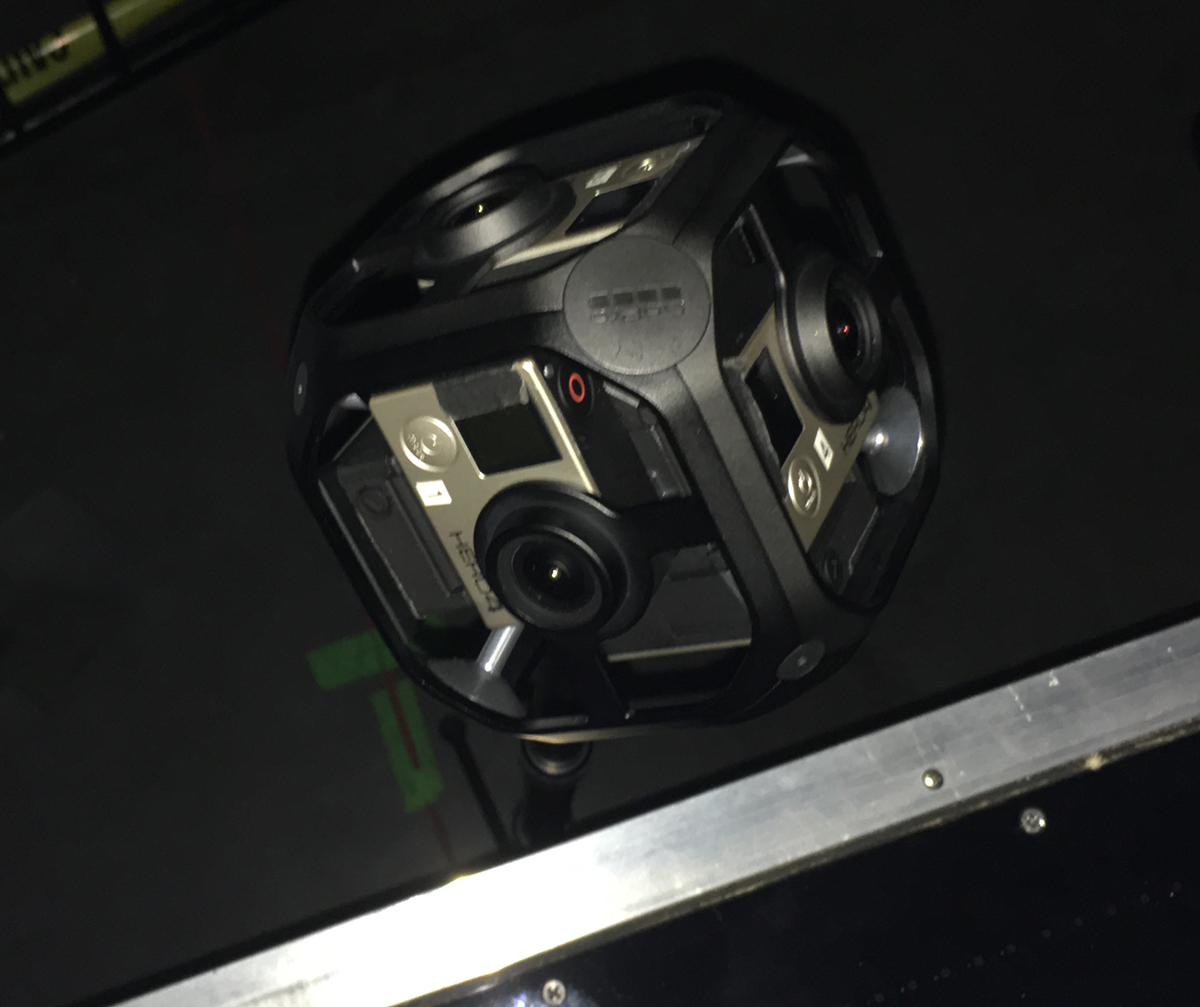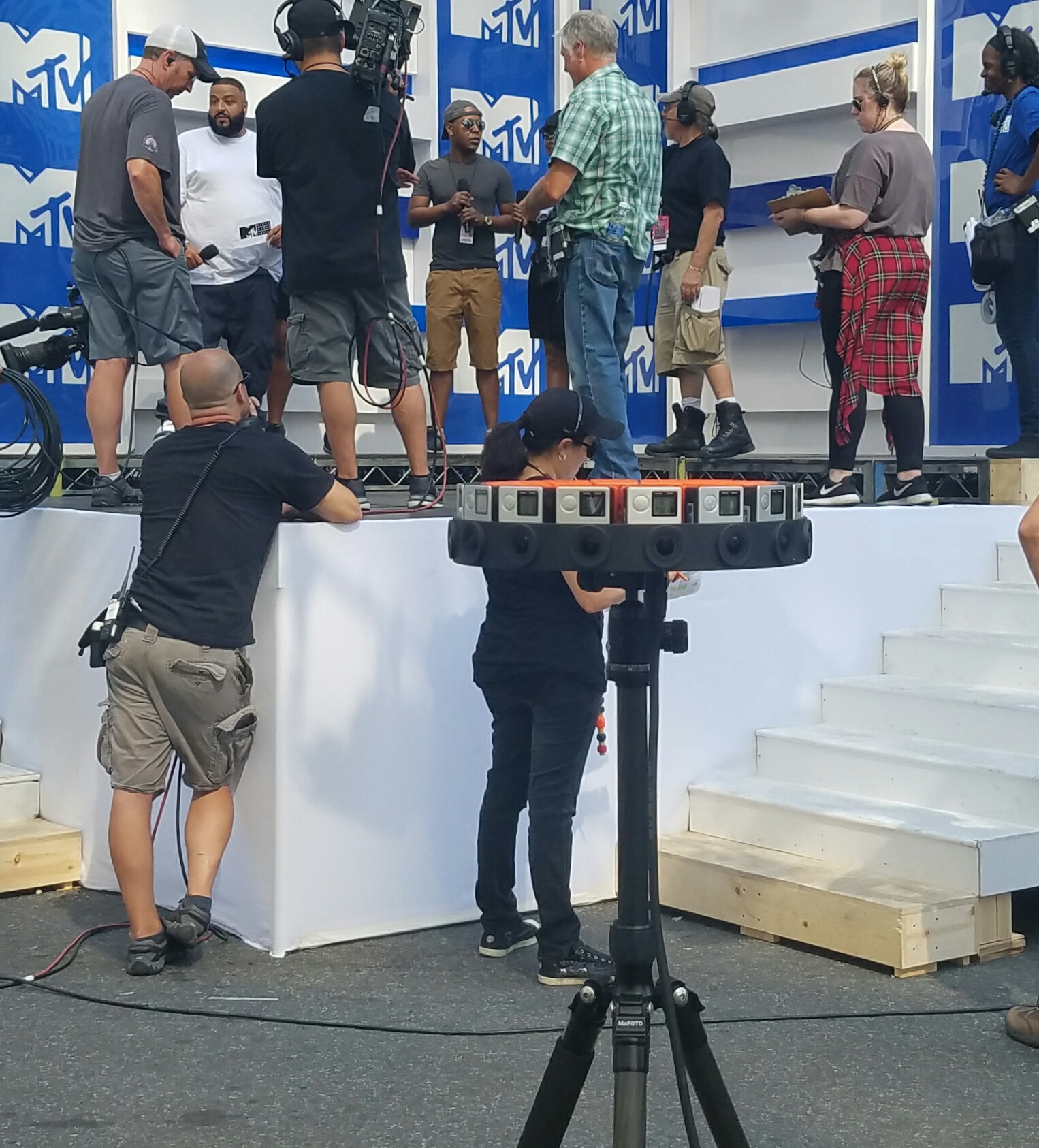Viacom/MTV Takes Virtual Reality to Next Level With Multicam VOD Production at VMAs
Story Highlights
After live-streaming a pair of 360–virtual-reality feeds from the MTV Video Music Awards red carpet last year, Viacom Media Network’s Music and Entertainment Group opted to go another route for the 2016 VMAs on Sunday. Rather than going live, the MTV production team deployed four 360-VR cameras inside Madison Square Garden during the show and will produce a full VOD product for digital outlets in the coming weeks.
Click here for a look at Viacom/MTV’s massive production of the 2016 VMAs.
“This year, we have evaluated, and, at this time, we believe it’s better to have multiple cameras for a fully edited 360-VR package than to go live,” says Jeff Jacobs, SVP, production planning, strategies, and operations, Viacom Media Networks Music and Entertainment Group. “We believe we can tell a better story with four cameras taking the VR-viewing audience where they need to be at that time they need to be there; rather than with a single live VR camera.”
Last year, Jacobs and company deployed a pair of 360-VR camera rigs on the VMA red carpet: one at the step-and-repeat and another farther down the red-carpet area. MTV also provided VOD 360-VR content of the VMAs themselves after the event. In addition, Viacom deployed several VR cameras that were for R&D and were not part of the live-streaming production.
“When it gets to the point when we can effectively cut and integrate a high-quality feed with four 360-VR cameras … plus graphics and effects, then we will really have something to enhance the viewer’s viewing experience with,” says Jacobs. “We are working on it, but it’s not quite there yet.”
The 360-VR production’s four camera rigs were deployed with one on each side of the stage itself, on top of a jib, and on a Steadicam. The camera models varied and included the brand-new GoPro OMNI, which will alleviate many producer concerns, including overheating, thanks to its external-power-source capability and the need to turn power on to six individual cameras following a sync test.
MTV was also experimenting with the GoPro Odyssey VR rig, which features 16 HERO4 Black cameras in an all-in-one rig capable of capturing 8K/30 video and capable of 3D/360 VR.
After the show, the production team, led by producers Jana Blumenthal and Miguel Rojas, ingested content from the four cards into MTV’s VR edit suites at its Times Square production facility. The content is stitched together to create raw footage and will be edited together to create a complete storyline.
“We edit it based on where the best story can be told for the viewer,” says Jacobs. “[When editing], we have to point [the viewer] in the right direction for every scene. It’s not just multicam editing with four cameras; when we jump you to a new angle, we have to point you where we want you to look and then let you tell your own story from there. Otherwise, you might be looking at the audience or black space and not understand the story that is being told.”
He notes that MTV and all of Viacom continue to experiment with the use of graphics and virtual pointers to help guide the viewer to the best action within the scene, as the West Coast-based Spike Digital team did for a Bellator 360 VOD product delivered earlier this year.
“We’ve learned a lot, and we’re still learning,” says Jacobs. “It’s a fascinating and challenging editing process, but I’m excited about what we can do in VR; it’s really adding to the fan experience.”


